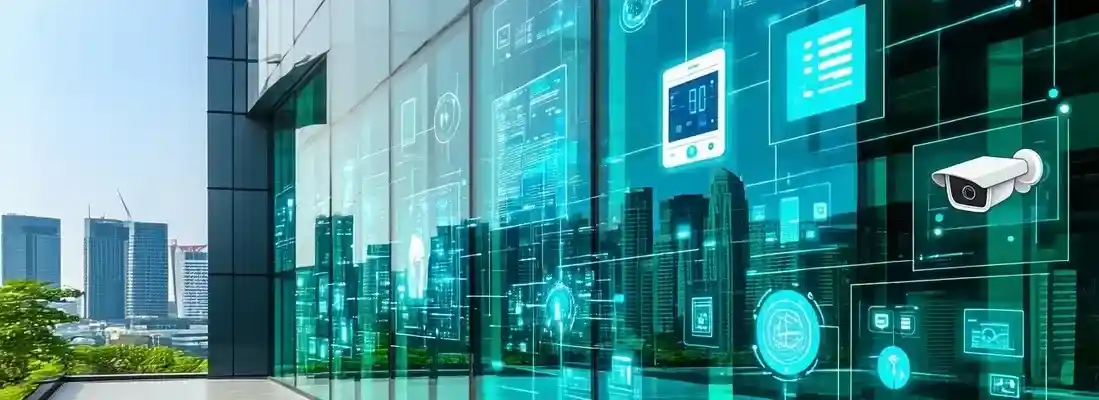Robust Cybersecurity Protocols for Advanced Vehicle Cockpit Systems
Date: 22 January 2024

Vehicle cockpit systems have evolved rapidly in recent years to incorporate advanced technologies like navigation, entertainment, and vehicle performance monitoring systems. As cockpits become more connected and reliant on software, they also become more vulnerable to cybersecurity threats. Implementing robust cybersecurity protocols is critical to protect drivers and passengers as well as maintain the integrity of vehicle operations.
This article provides an in-depth look at the evolution of cockpit systems, the cybersecurity challenges they face, and best practices for implementing cybersecurity protections. It intends to provide essential knowledge so industry stakeholders can make informed decisions to incorporate robust cyber protections. Secure cockpit systems will be vital for consumer trust and the adoption of future vehicle technologies.
Evolution of Vehicle Cockpit Systems
The vehicle cockpit has evolved significantly over the past few decades. In the 1980s, analogue gauges and switches dominated the dashboard. Functions like HVAC, audio, and trip data were controlled via dials and buttons.
In the 1990s, digital displays started appearing but were limited to basic functions like trip mileage, fuel economy, and radio information. In the 2000s, advanced driver assistance systems (ADAS) emerged, providing warnings about lane departures, forward collisions, and blind spots. This ushered in more digital displays on the dashboard.
By 2010, automakers introduced the first iterations of fully digital instrument clusters. These customisable and reconfigurable screens displayed major drivetrain data and allowed personalisation of information.
In recent years, large touchscreens have become a prime feature of cockpit systems. They integrate entertainment, navigation, vehicle settings, ADAS, and voice assistants in one central location. Gesture recognition and haptic feedback are also increasingly common. The state-of-the-art displays of today include curved OLED displays, 3D digital clusters, head-up displays, and highly advanced voice recognition systems. Augmented reality features are on the horizon as cockpits transform into sophisticated information hubs.
The vehicle cockpit has undergone rapid innovation, moving from simple analogue gauges to today's highly digital, customisable, and multimodal human-machine interfaces. This evolution mirrors the transformative shift towards an automotive digital cockpit, where connectivity and autonomy advancements converge to create even more intelligent and driver-focused environments.
Cybersecurity Threat Landscape for Vehicle Cockpit Systems
The cybersecurity threat landscape for vehicle cockpit systems is vast and rapidly evolving. Some of the major types of threats include:
Data Theft and Privacy Breaches
With cockpit systems gathering vast amounts of data about vehicle performance, location tracking, and even driver behaviour, breaches pose major privacy risks. Hackers or malicious insiders may attempt to steal driver data and location history, or corporate trade secrets related to proprietary algorithms and technology.
System Disruption
Attackers may attempt to overwhelm cockpit systems and networks through distributed denial of service (DDoS) attacks, brute force login attempts, and other techniques aimed at disrupting connectivity and availability. System outages could have major safety implications depending on what functions are impacted.
Financial Fraud
As cockpit systems enable greater integration with digital wallets, payment apps, and e-commerce, they open up new avenues for financial fraud through hacking of accounts, skimming of payment info, or identity theft leveraging stored customer data.
Reputational Damage
All of the above threats, if exploited, could also severely damage an automaker's brand reputation and public trust if they are seen as having lax security standards and failing to protect customer safety and privacy.
To mitigate these threats, automakers must implement robust cybersecurity best practices across their entire product lifecycle. The stakes for getting security right will only grow as cockpit systems become more interconnected and critical to vehicle functionality.
Importance of Robust Cybersecurity in Advanced Vehicle Systems
Modern vehicles contain increasingly sophisticated infotainment and advanced driver assistance systems that are connected to various networks. This connectivity exposes vehicles to cybersecurity risks that can have major financial and safety implications if not properly addressed.
Financial Impacts of Breaches
A cyber attack that gains access to critical vehicle systems can be extremely costly for auto manufacturers. Remediating security vulnerabilities across an entire fleet of vehicles is a complex and expensive undertaking. The harm to a brand's reputation from a major breach can also dramatically impact sales and revenue. The financial fallout from large-scale vehicle hacking could run into the billions of dollars in lost sales, lawsuits, and recovery costs.
Safety Risks
The most alarming consequence of poor automotive cybersecurity is the potential safety risks. If hackers can remotely access critical systems like acceleration, braking, or steering, they could cause crashes and threaten lives. One study found that a remote attack could result in as many as 9,000 fatalities if deployed across a fleet of vehicles.
Robust cybersecurity protocols that safeguard financial systems and critical safety features are therefore essential. The risks of lax security are too steep, both in terms of potential financial losses and lives endangered. Automakers must treat cyber threats with the gravity they deserve and continuously strengthen their defenses.
Key Components of Vehicle Cockpits
Modern vehicle cockpits contain advanced electronics and software that control critical systems and allow for increasing levels of automation. Key components vulnerable to cyber threats include:
- Infotainment system - Provides entertainment and information to passengers through touchscreens, voice commands, and smartphone integration. An entry point for attackers to access other systems.
- Instrument cluster - Displays critical information like speed, fuel level, and engine diagnostics. It could be compromised to show false readings.
- Powertrain - Engine, transmission, throttle - hackers demonstrated the ability to remotely control acceleration and braking.
- Body control - Centralized control of lights, locks, HVAC - vulnerabilities could enable external control.
- Internal network - MOST, CAN, Ethernet - they interconnect electronic control units (ECUs). Vulnerable to attacks that spread malware.
With more wireless connectivity and automation, the attack surface is increasing. A holistic approach is needed to secure vehicle cockpits against cyber threats. Automakers are increasingly turning to specialized automotive software development services to implement robust security measures and stay ahead of evolving cyber risks in their connected vehicle systems.
Current Cybersecurity Measures in the Industry
Ensuring the security of vehicle cockpit systems is crucial due to their exposure to sensitive customer data and connection to various networks, making them susceptible to cyber threats. Automakers have implemented a range of cybersecurity measures to safeguard these systems.
One key strategy involves employing secure bootloaders and encrypted firmware updates. This helps prevent malware infections and tampering by verifying the integrity of firmware before allowing it to load.
Another layer of protection involves secure key storage mechanisms, such as hardware security modules, to safeguard cryptographic keys. These keys, especially those used for communication authentication, are fortified against extraction. Software integrity checking, employing cryptographic hash verification, helps detect tampering or code modifications and digitally signed firmware updates further ensure authenticity.
Sensitive data is encrypted both at rest and in transit using standards like TLS, VPNs, HTTPS, and SSL/TLS certificates. Additional security measures include multi-factor authentication, least privilege principles, and firewalls, which allow only authorised access to cockpit systems and data. Identity and access management solutions centralise control, enhancing overall security.
Advancements in Cybersecurity Technologies
The cybersecurity landscape for connected vehicles is rapidly evolving to address emerging threats. Automakers and suppliers are investing heavily in developing cutting-edge technologies and innovative approaches to strengthen cyber protection.
Some key advancements include:
- Intrusion detection and prevention systems (IDPS) - Network monitoring tools that identify malicious activity and block cyber attacks in real time. IDPS is becoming standard in vehicles to provide 24/7 monitoring of in-vehicle networks.
- Over-the-air (OTA) updates - Allowing cybersecurity patches and firmware upgrades to be deployed remotely to vehicles. This ensures the fleet is protected against newly discovered vulnerabilities.
- AI-powered cybersecurity - Using artificial intelligence and machine learning to detect anomalies and new attack patterns. AI can respond at machine speed to emerging threats.
- Formal verification - Mathematical approach to verify the correctness of critical software code. Helps eliminate vulnerabilities in software design.
- Vulnerability testing and penetration testing - Rigorous testing by white hat hackers to probe systems for weaknesses before cars reach the market. Fixing vulnerabilities pre-production.
With the rapid adoption of intelligent connectivity, automakers are accelerating R&D in cybersecurity. Multi-layered protection and continuous hardening of systems will be key to staying ahead of threats.
Regulatory Landscape for Connected Vehicles
Governments and industry groups have taken steps to improve cybersecurity regulations and guidelines for connected vehicles. This is an attempt to get ahead of emerging risks as vehicles become more reliant on software and internet connectivity.
Several government initiatives aim to establish baseline cybersecurity requirements for vehicle manufacturers. In the United States, the National Highway Traffic Safety Administration (NHTSA) has issued proposals mandating new standards. These include requirements for isolating critical driving systems, detecting and responding to intrusions, and securing vehicle data. The European Union's Cybersecurity Act also empowers regulators to introduce new automotive cybersecurity rules.
Industry partnerships are also leading efforts to address vulnerabilities. The Automotive Information Sharing and Analysis Center (Auto-ISAC) enables carmakers to collaborate on emerging threats. The group has established best practices on issues like over-the-air software updates. The Auto-ISAC works closely with government agencies to develop policies that balance innovation and security.
Overall, the regulatory environment is still evolving when it comes to connected vehicle cyber risks. However increased oversight and information sharing within the auto industry aims to get ahead of threats before major incidents occur. Manufacturers are trying to work closely with regulators to make cybersecurity a priority throughout the vehicle lifecycle.
Conclusion
In summary, advanced vehicle cockpit systems have evolved to provide greater connectivity, automation, and infotainment capabilities. However, this also exposes them to emerging cybersecurity threats that could endanger drivers and passengers.
Implementing robust cybersecurity protocols is crucial to secure cockpit systems against malicious attacks and protect sensitive user data. In closing, cybersecurity must remain an utmost priority as vehicle cockpits continue advancing.








